Worksheets Potential and Kinetic
Worksheets are a valuable resource for those seeking to deepen their understanding of potential and kinetic energy. Whether you are a student looking to reinforce concepts learned in the classroom or a teacher in search of additional practice materials for your students, worksheets can serve as a convenient and effective tool for learning about these fundamental physics concepts.
Table of Images 👆
More Other Worksheets
Kindergarten Worksheet My RoomSpanish Verb Worksheets
Cooking Vocabulary Worksheet
DNA Code Worksheet
Meiosis Worksheet Answer Key
Art Handouts and Worksheets
7 Elements of Art Worksheets
All Amendment Worksheet
Symmetry Art Worksheets
Daily Meal Planning Worksheet
What is potential energy?
Potential energy is the energy that an object possesses due to its position or state. It is stored energy that has the potential to do work in the future. This type of energy is dependent on an object's height, position, or configuration in a system, and can be transformed into kinetic energy when the object is in motion.
Give an example of an object with high potential energy.
A boulder at the edge of a cliff is an example of an object with high potential energy because it has the potential to release a significant amount of energy when it falls due to the force of gravity acting upon it.
What factors determine the amount of potential energy an object has?
The amount of potential energy an object has is determined by its mass, its height above a reference point, and the strength of the gravitational field acting on it. The formula for potential energy is PE = mgh, where m is the mass of the object, g is the acceleration due to gravity, and h is the height of the object above the reference point.
What is kinetic energy?
Kinetic energy is the energy an object possesses due to its motion. The amount of kinetic energy an object has is dependent on its mass and velocity. The formula for calculating kinetic energy is 1/2 * mass * velocity^2. As an object moves faster or has a greater mass, its kinetic energy increases accordingly.
Provide an example of an object with high kinetic energy.
A speeding bullet fired from a gun is an example of an object with high kinetic energy, as it possesses both mass and velocity, resulting in a significant amount of energy due to its fast movement.
How is kinetic energy different from potential energy?
Kinetic energy is the energy that an object possesses due to its motion, while potential energy is the energy that an object possesses due to its position or state. Kinetic energy is dependent on the object's mass and velocity, while potential energy is related to the object's height above the ground or its position relative to other objects. Both types of energy are essential in understanding the behavior of objects in motion and at rest.
What are the different forms of potential energy?
There are several forms of potential energy, including gravitational potential energy, elastic potential energy, chemical potential energy, and nuclear potential energy. Gravitational potential energy is associated with an object's position in a gravitational field, elastic potential energy is stored in compressed or stretched objects, chemical potential energy is stored in the bonds of chemicals, and nuclear potential energy is stored in the nucleus of an atom.
Explain the principle of conservation of energy in relation to potential and kinetic energy.
The principle of conservation of energy states that energy cannot be created or destroyed, only transformed from one form to another. In the context of potential and kinetic energy, this means that the total mechanical energy of a system remains constant as long as only conservative forces are at play. Potential energy is stored energy that an object possesses due to its position or condition, while kinetic energy is the energy of motion. As an object moves in a system, potential energy can be converted to kinetic energy and vice versa, but the total amount of potential and kinetic energy in the system remains the same unless acted upon by non-conservative forces like friction or air resistance.
How can potential energy be converted into kinetic energy?
Potential energy can be converted into kinetic energy by allowing an object to move or fall freely under the influence of gravity or other forces. As the object loses height or changes position, its potential energy decreases while its kinetic energy increases. This transfer of energy occurs due to the object's motion and can be calculated using the relationship between potential energy (PE) and kinetic energy (KE), where PE is equal to mgh (mass x gravity x height) and KE is equal to 1/2mv^2 (1/2 times mass times velocity squared).
Describe the relationship between potential and kinetic energy in a roller coaster ride.
In a roller coaster ride, there is a relationship between potential and kinetic energy. Potential energy is highest at the highest point of the ride, such as at the top of a hill, due to the height the coaster has been lifted to. As the coaster descends, this potential energy is converted into kinetic energy, resulting in an increase in speed. At the bottom of the hill or through loops and curves, the kinetic energy is at its maximum, allowing the coaster to continue moving through the track. The constant interchange between potential and kinetic energy is what keeps the roller coaster moving throughout the ride.
Have something to share?
Who is Worksheeto?
At Worksheeto, we are committed to delivering an extensive and varied portfolio of superior quality worksheets, designed to address the educational demands of students, educators, and parents.




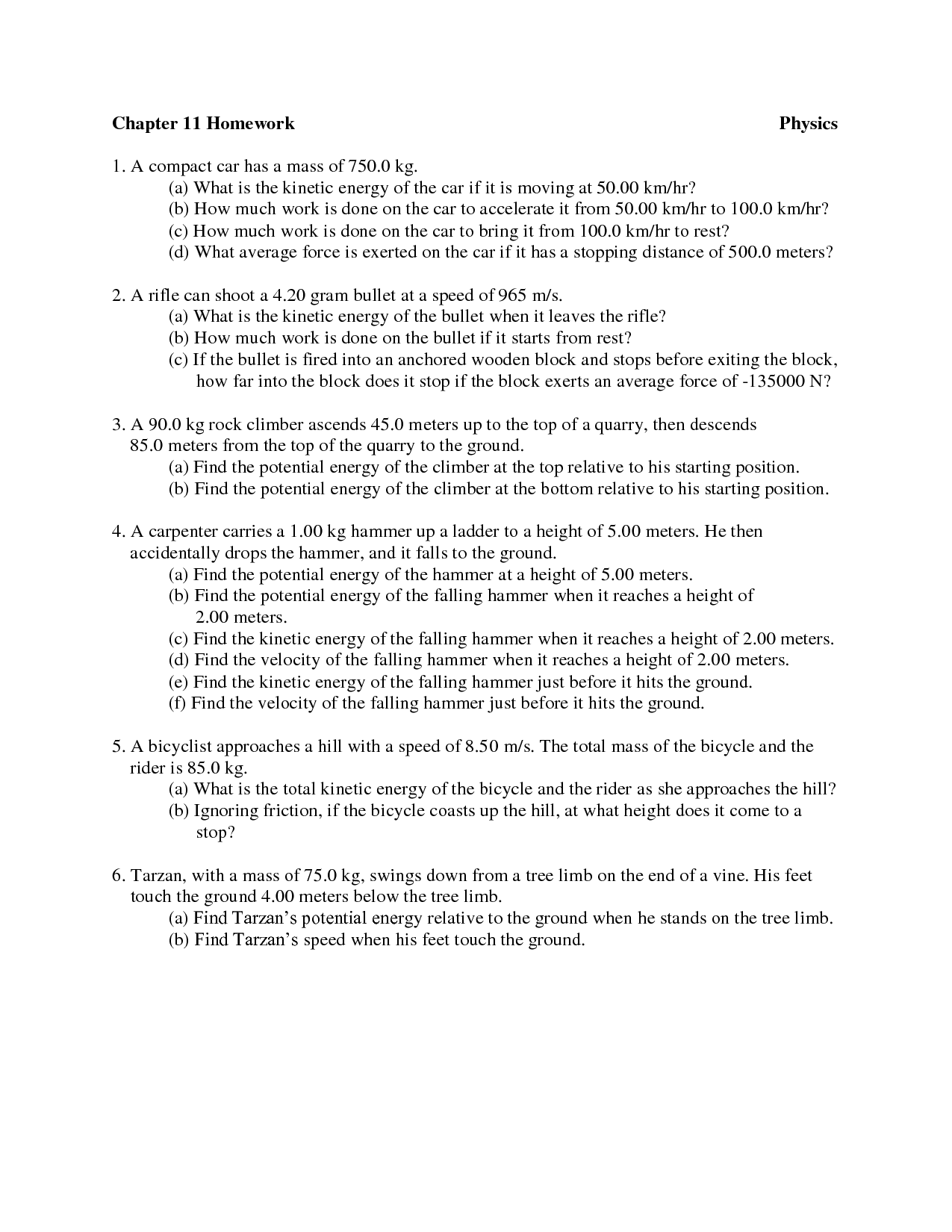
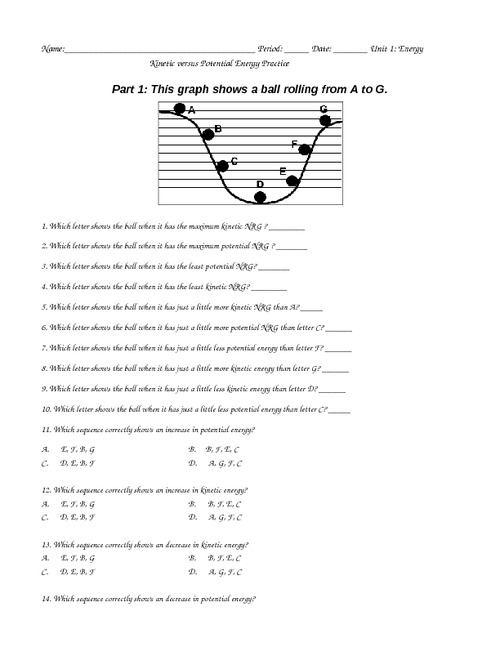

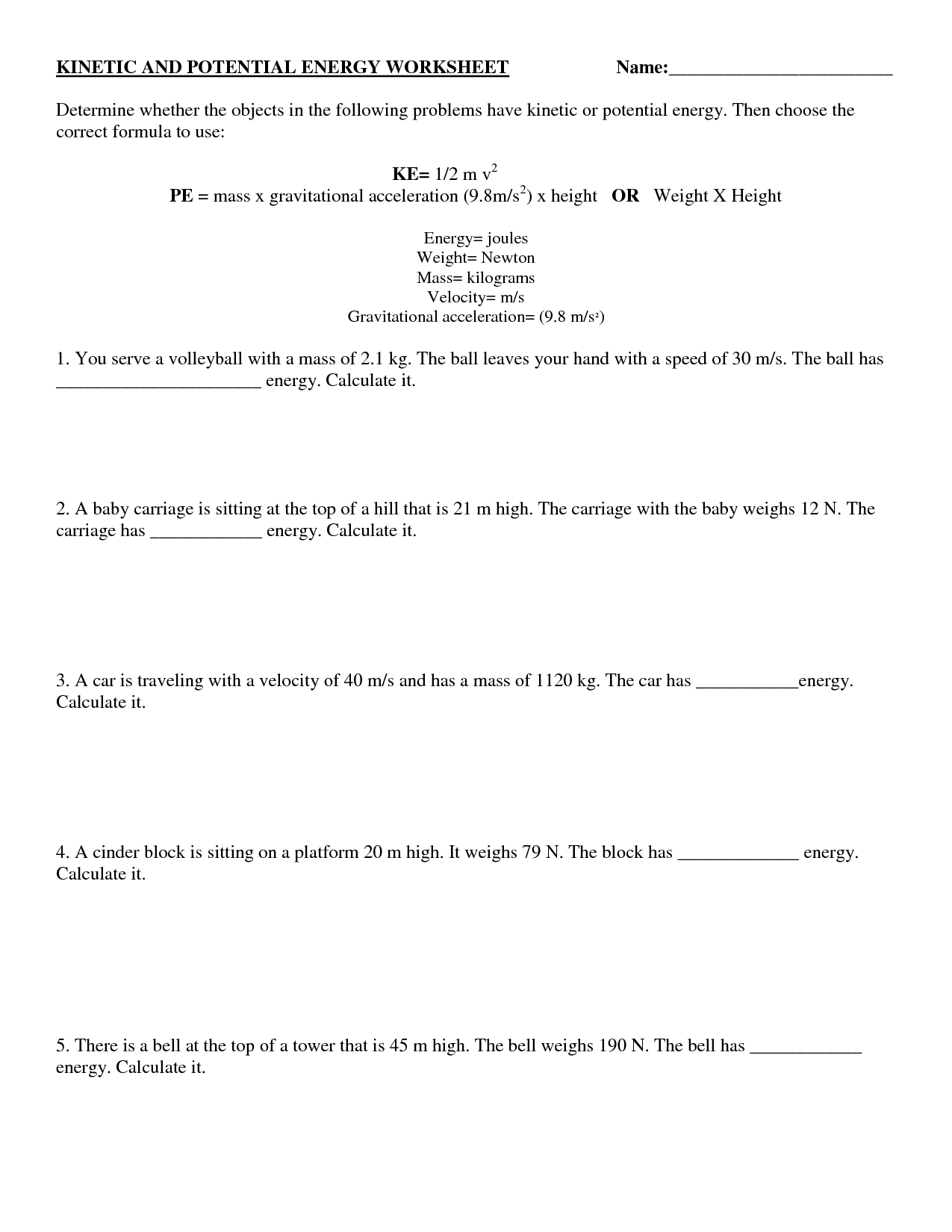
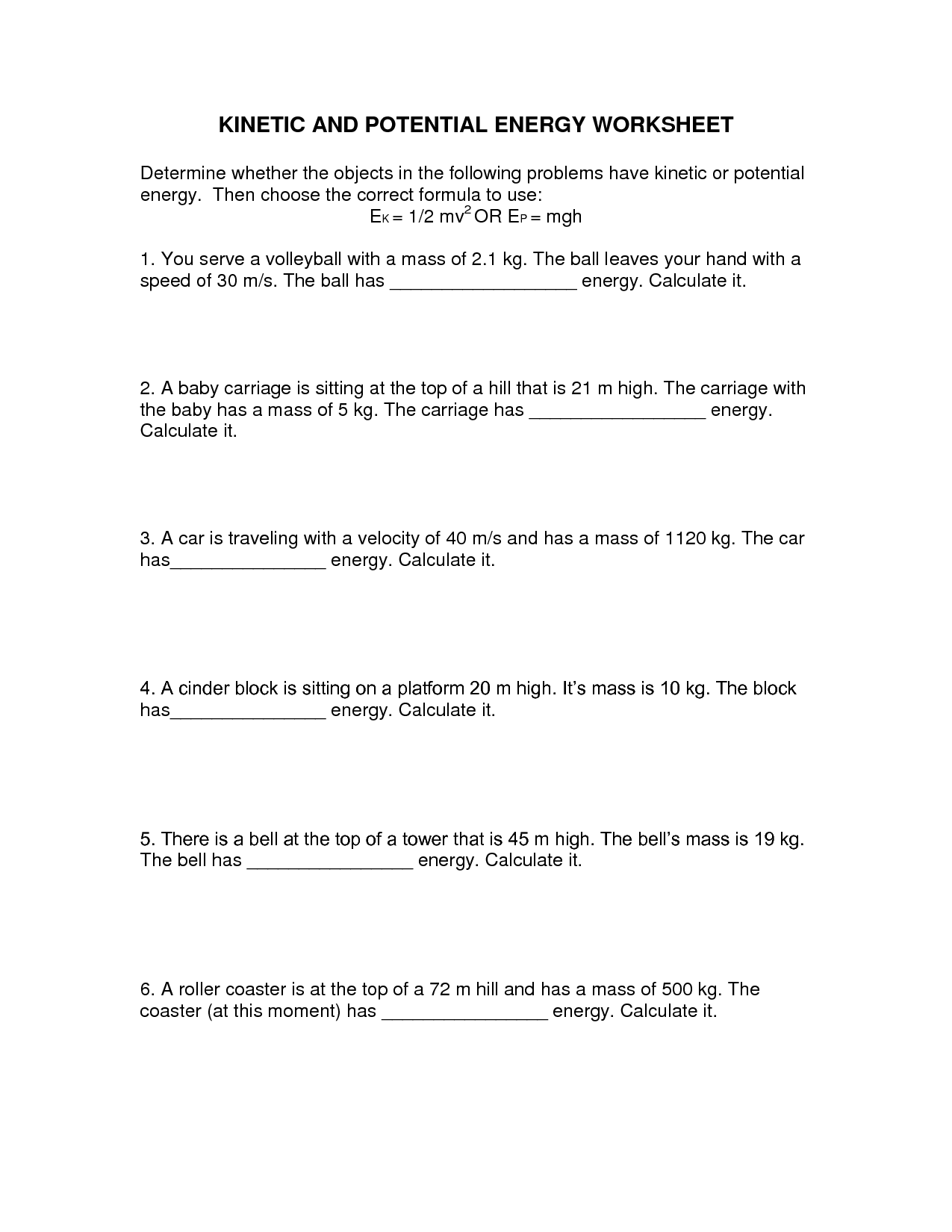
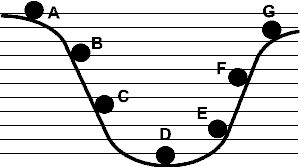
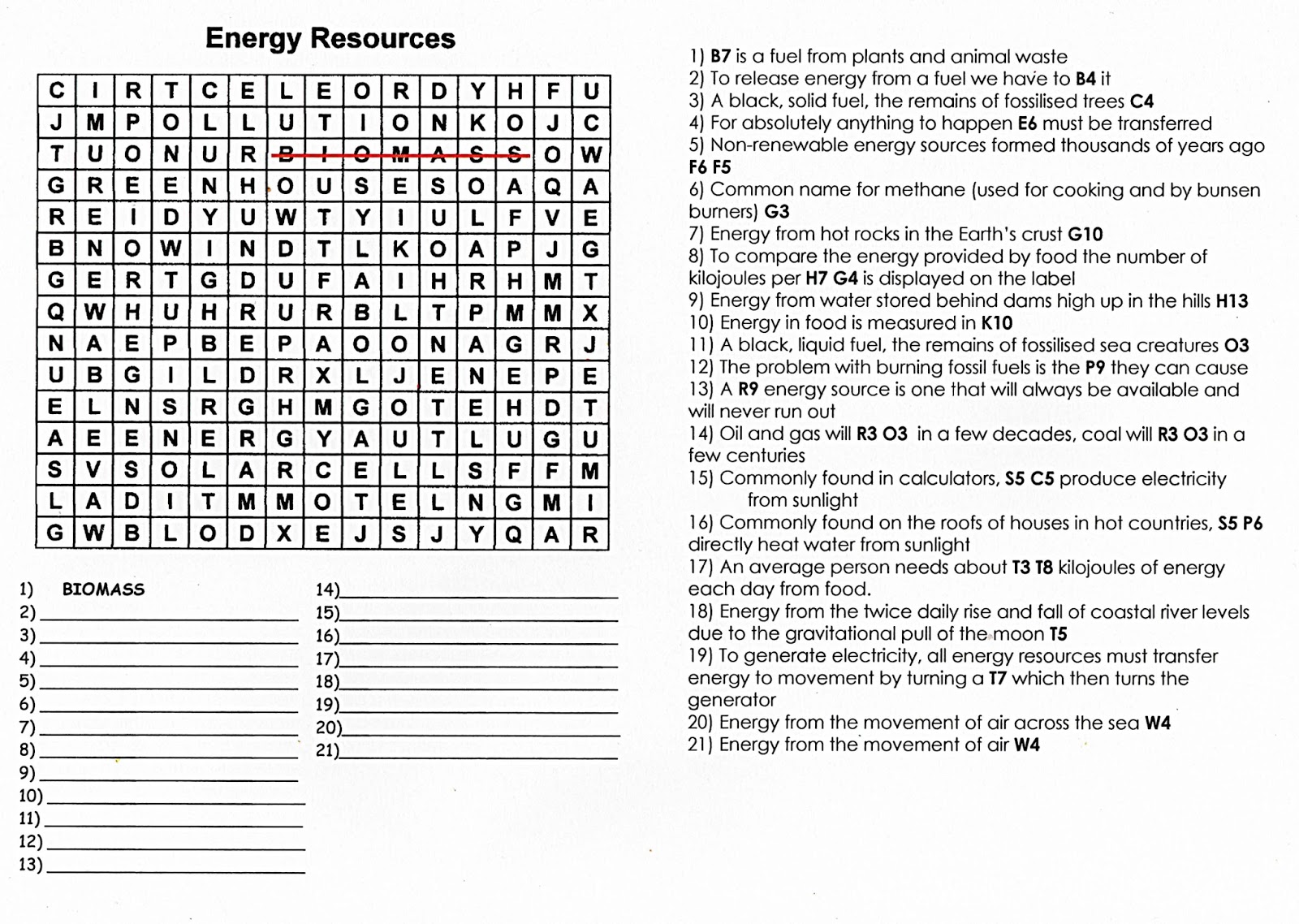
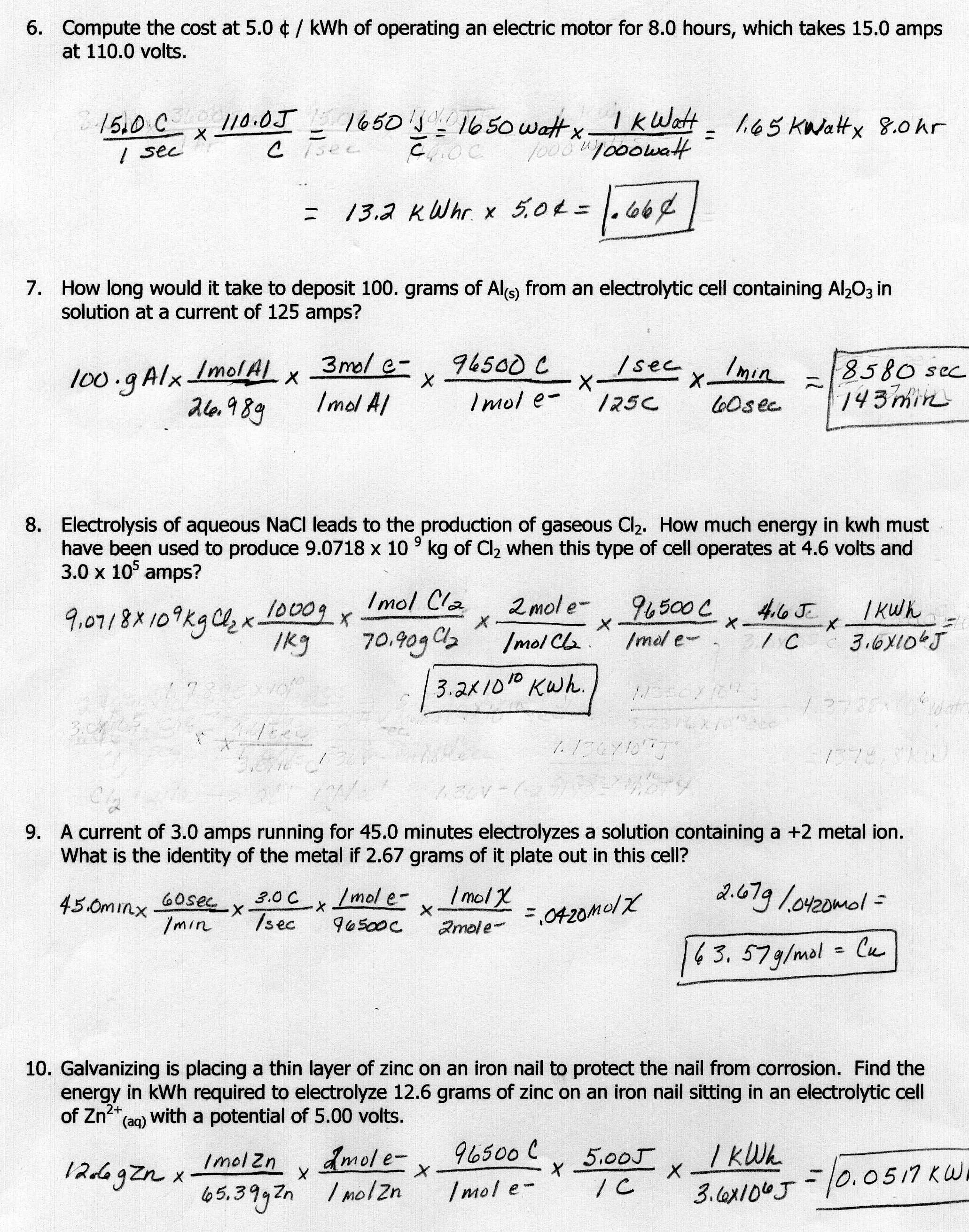

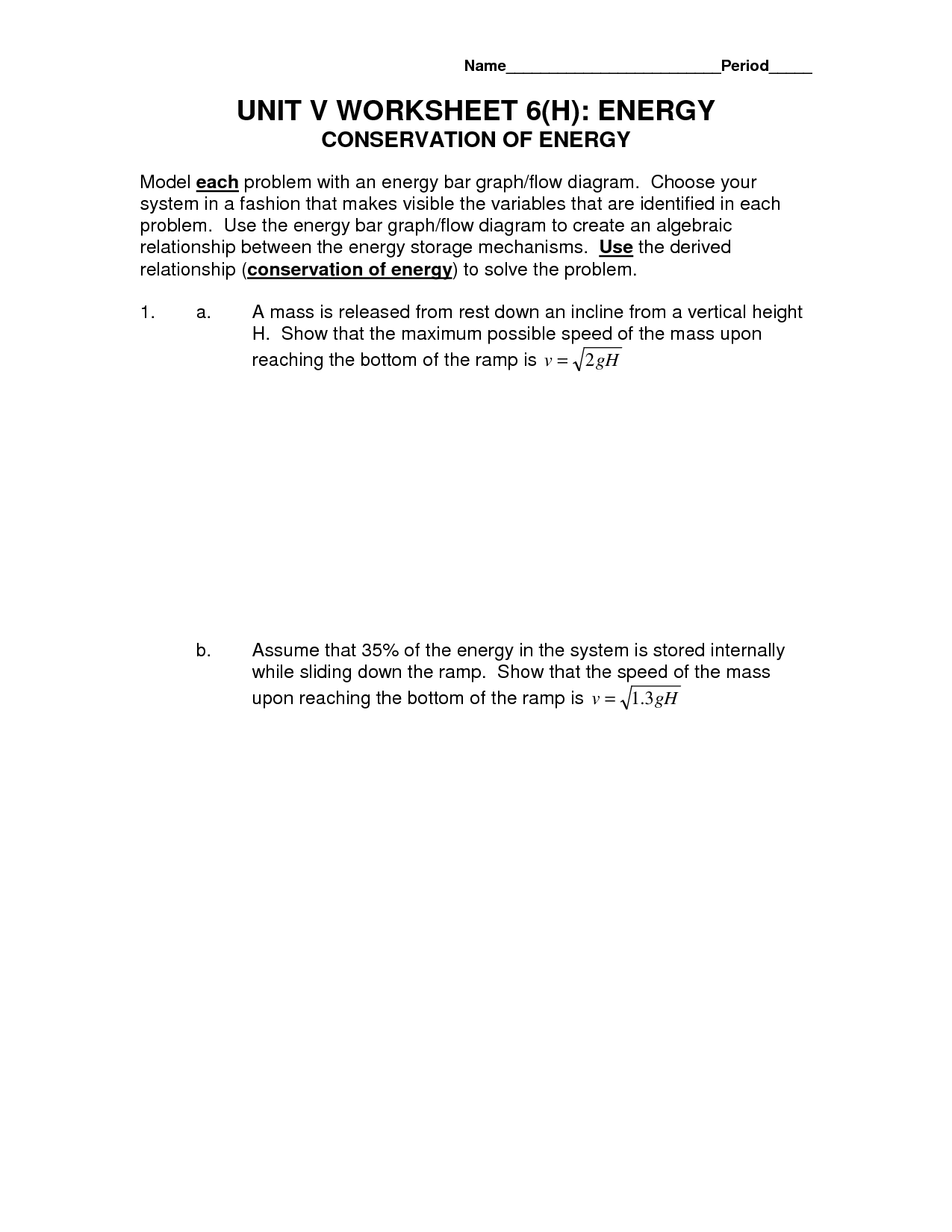

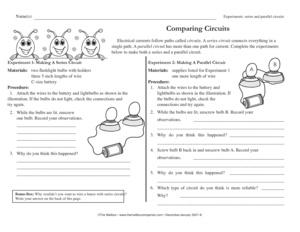
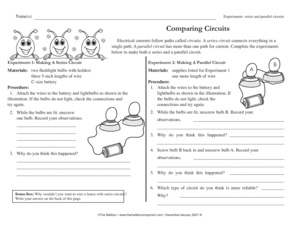
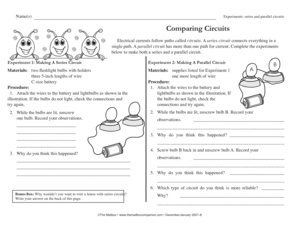















Comments